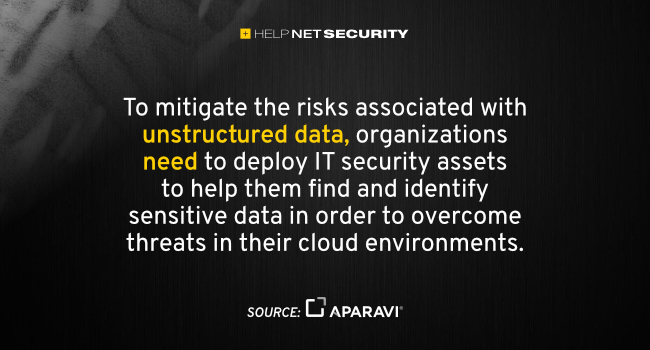Managing the risks of unstructured data growth
Locating and identifying sensitive data, including defense-in-depth strategies where a series of mechanisms are layered to protect valuable information, should be a critical component of any cloud data security strategy, say experts at Aparavi.

Data security refers to protecting digital information from unauthorized access, corruption or theft throughout its lifecycle. Cloud data security focuses specifically on protecting digital information “in the cloud.”
With cyberattacks increasing in both sophistication and frequency, and regulatory requirements regarding the privacy of and access to data more complex (and fines more expensive), organizations need a better way to overcome the challenges of securing their data regardless of whether it resides on premise, at the edge or in the cloud.
Unstructured data in the cloud
Much of the data in the cloud is unstructured and highly vulnerable to cyber threats. Unstructured data can include anything from emails and FedEx receipts to sensor data and social media feeds.
It often contains files with personal or sensitive information, like personnel documents, school records, credit card information, medical history and other personally identifiable information.
With the exponential growth of unstructured data and increases in the number of users and devices generating, accessing and using it, the number of vulnerabilities and opportunities for attack have risen as well.
“Whether data resides on on-premise servers or in the cloud, no amount of cybersecurity protection will help if you don’t know what you have,” said Adrian Knapp, CEO of Aparavi.
“Thanks to data silos, shadow IT and other factors, many organizations don’t know where their unstructured data resides, what their unstructured data contains, who has access to it or how often it’s being accessed. To mitigate the risks associated with unstructured data – and meet compliance, data security and privacy requirements – organizations need to deploy IT security assets to help them find and identify sensitive data in order to overcome threats in their cloud environments,” Knapp concluded.